August 26, 2022
Air Date: August 26, 2022
FULL SHOW
SEGMENTS
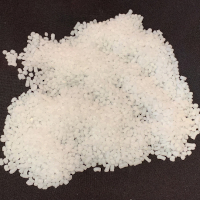
The Climate and Plastic
View the page for this story
Plastic pollution is one of the biggest environmental threats to this planet, and according to a report by the advocacy group Beyond Plastics, greenhouse gas emissions from plastic production in the United States are on track to outpace domestic coal emissions. Judith Enck, a former regional administrator of the EPA and founder of Beyond Plastics, co-authored the report and joins Living on Earth’s Bobby Bascomb to discuss. (10:36)

Captive Audience
/ Mark Seth LenderView the page for this story
Cooperative hunting among birds is rare but Living on Earth’s Explorer in Residence, Mark Seth Lender, shares an unexpected instance among yellow-billed storks in Kenya. (02:24)
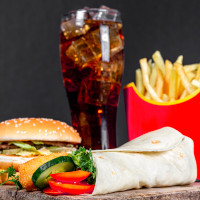
Fast Food with a Side of Phthalates
View the page for this story
Fast food could be even more unhealthy than we knew, as a study that sampled fast food items from six major chains found toxic chemicals linked to serious health problems and even early death. Researchers found that at least 70 percent of the fast-food items tested contained phthalates, which are used to soften plastics. Dr. Ami Zota, associate professor at George Washington University’s Milken School of Public Health and co-author of the study, joins Host Steve Curwood to discuss. (09:39)
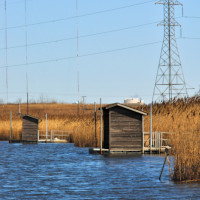
Rising Seas Threaten Landfills
View the page for this story
Landfills in America were often sited in coastal wetlands before their value as wildlife habitat and buffers from coastal storms was better known. Now rising seas are threatening to unleash the trash, toxics, and even nuclear waste these landfills contain. Journalist Dave Lindorff joins Host Bobby Bascomb to discuss the risks. (06:35)

A New African Voice on Climate
View the page for this story
Countries in the global South are among the least responsible for causing climate change compared to the global North but are among the ones suffering the most from its effects. Vanessa Nakate, a young climate justice activist from Uganda, is an advocate for the underserved communities who are the most affected by climate change. She joins Host Steve Curwood to talk about her book A Bigger Picture: My Fight to Bring a New African Voice to the Climate Crisis, in which she points to how the climate crisis is impacting Africa and the discrimination she’s faced in speaking up. (16:05)
Show Credits and Funders
Show Transcript
HOSTS: Bobby Bascomb, Steve Curwood
GUESTS: Judith Enck, Dr. Ami Zota, Dave Lindorff, Vanessa Nakate
REPORTERS: Mark Seth Lender
CURWOOD: From PRX this is Living on Earth
[THEME]
CURWOOD:I’m Steve Curwood
BASCOMB: And I’m Bobby Bascomb
Most plastic is made from fossil fuels and it’s directly contributing to climate
Change.
ENCK: As of 2020 the U.S. plastics industry is already responsible for at least 232 million tons of greenhouse gas emissions every year. This amount is equivalent to 116 average sized coal plants.
CURWOOD: Also, phthalate chemicals found in plastic, are common in fast food.
ZOTA: Generally foods containing meats such as cheese burgers and chicken burritos had higher levels of chemicals. And so we’re doing a big experiment on ourselves where we’re allowing our population to be exposed to this chemical.
CURWOOD: That and more this week on Living on Earth – Stick Around!
[NEWSBREAK MUSIC: Boards Of Canada “Zoetrope” from “In A Beautiful Place Out In The Country” (Warp Records 2000)]
[THEME]
The Climate and Plastic
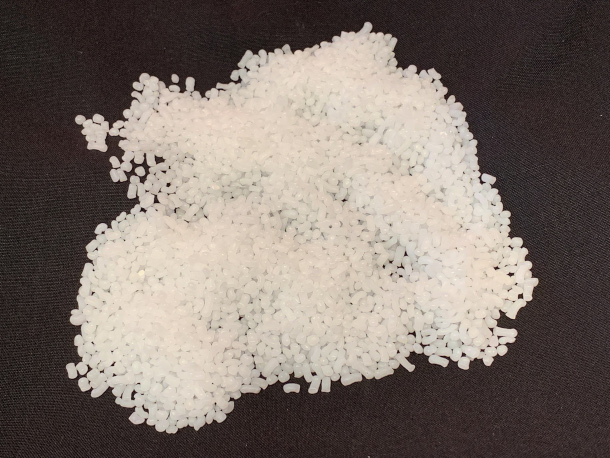
Plastic nurdles are tiny pieces of plastic created by ethane cracker plants and constitute the primary feedstock of plastic manufacturing. (Photo: Mark Dixon, Flickr, Public Domain)
Note: This segment starts at 1:10 in the above podcast file.
CURWOOD: From PRX and the Jennifer and Ted Stanley studios at the University of Massachusetts Boston this is an encore edition of Living on Earth, I’m Steve Curwood.
BASCOMB: And I’m Bobby Bascomb. Plastic production in the US is on track to outpace domestic coal in terms of greenhouse gas emissions. That’s according to a report from the advocacy group Beyond Plastics based at Bennington College in Vermont. Analyzing data provided by plastic manufacturers to the federal government, the firm Material Research looked at every aspect of plastic manufacturing, cradle to grave, to determine how much plastic is contributing to climate change. They found that in 2020 the plastics industry was responsible for
roughly 232 million tons of greenhouse gas emissions, roughly equivalent to those of 116 typical coal fired power plants. And that number is set to increase dramatically as fossil fuel
companies continue to invest in more plastic production. Judith Enck is a former regional administrator of the EPA and founder of Beyond Plastics, and co-author of their report titled, The New Coal: Plastics and Climate Change. She says most plastic produced in the US is a byproduct of hydrofracking for natural gas. So, fracking and plastic go hand in hand.
ENCK: Well, they are attached at the hip. It's because of the massive increase in hydrofracking in the United States we're seeing this big expansion of plastic production. What's happening is we have about 1 million hydro fracking sites throughout the country. And at the actual sites, you have methane gas that is vented into the atmosphere as a waste gas, it's never really captured. And what we're seeing at a small number of these sites, but it's still significant, is pipelines are being constructed to capture some of that gas and bring it to new multibillion dollar ethane cracker facilities. These are enormous manufacturing plants, where the gas is heated at very high temperature and then cracked. That's why it's got the funny name of cracker, there's nothing delicious about it. And that then becomes the building block of single use plastic packaging. So at these ethane cracker facilities, at the end, you get billions of little pieces of plastic that are used. They're then shipped off to facilities where they make plastic packaging. One of the big problems is the ethane cracker facilities are super emitters of carbon.
BASCOMB: Now you say in your report that expanding ethane gas cracking facilities would add up to another 110 million tons of greenhouse gas in the next few years. Can you tell us about that please?
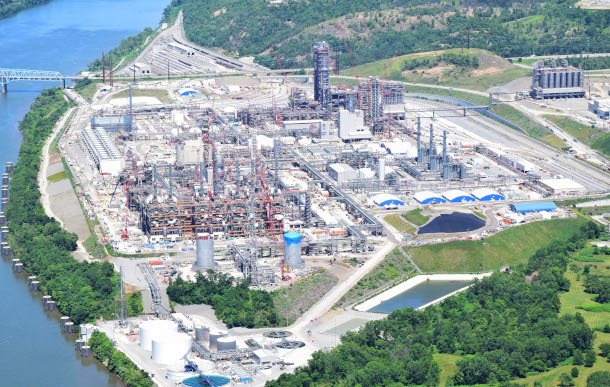
An ethane cracker facility owned by Shell in Beaver County Pennsylvania. (Photo: Ted Auch, FracTracker Alliance, Flickr)
ENCK: Sure. So, ethane crackers are probably what I'm worried about the most on this issue, because they are just so large, and are emitting such huge amounts of not just greenhouse gasses but also air toxins and particulate matter for people who live near these facilities. There are currently 35 operating ethane cracker plants in the United States that are emitting 70 tons of greenhouse gasses each year. That's the equivalent of 35 coal fired power plants. There are 12 Major cracker expansions proposed at existing locations and there are two really big ones that are poised to start operating very soon. One is owned by Shell in Bucks County, Pennsylvania and then there's a joint venture between Exxon Mobil and SABIC in Corpus Christi, Texas. And then there are another three new cracker facilities proposed. And what people need to realize that when they're these expansions are happening at existing locations, that is adding to the pollution burden of low income communities, communities of color, that already are being disproportionately impacted by this pollution.
BASCOMB: And a lot of these new ethane cracker facilities that are in the works are in an area, you know, colloquially called cancer alley. I mean, this is an area where people are already exposed to a lot of petrochemicals and industry and things like that. So to what degree do you see this as an environmental justice issue?
ENCK: This is probably one of the most serious environmental justice issues facing our nation. As you mentioned, these facilities are proposed in an area of Louisiana called cancer alley. It has that terrible name because of mostly air toxics and water pollution coming from the facility. And I think now we can call it climate change alley, because more than 90% of the climate pollution that the plastics industry has reported to the EPA occurs in only 18 communities. And this is mostly along the coastline in Louisiana, and Texas, and these are almost all low income communities and communities of color. And so we see the clustering of facilities. It's almost like the federal and state regulatory agencies have decided that there are sacrifice zones in our country. You already have a lot of petrochemical facilities so more are being added.
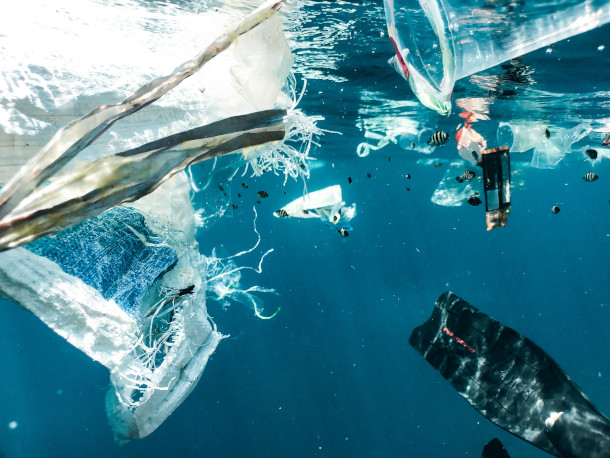
Plastic kills and endangers wildlife from birds to fish and there are estimated to be about 269,000 tons of plastic in the ocean. Invertebrates are especially susceptible; for example, when oysters eat plastic their immune system is weakened, thinning out their external shell and making them an easier catch for predators. (Photo: Naja Bertolt Jensen on Unsplash, Creative Commons)
BASCOMB: Well, why is plastic production increasing so dramatically? I mean is there really an increasing demand from consumers for more plastic? Or is this possibly more driven from the fossil fuel companies that make the raw material for it?
ENCK: It's absolutely not being driven by consumers. In fact, data is showing that consumers are looking for alternatives to plastic and it's hard when you're in an American supermarket, no matter how careful you are. This is happening because plastics is the plan B for the fossil fuel industry. Most of the fossil fuel profits come from two big businesses. One is electricity generation. And what's happening there? We're finally seeing a significant shift toward energy efficiency and renewable energy projects like wind, solar, small scale, hydro, geothermal. So the fossil fuel folks knew a long time ago that that shift away from relying on fossil fuels for power was reducing. At the same time, their second big profit center is transportation fuels. Well, what's going on there, we're electrifying more and more people are buying electric cars. big truck fleets are eventually switching over to electric vehicles. So the fossil fuel industry knows that their market for electricity generation and transportation is reducing. So that's why I say they are counting on plastics as being their plan B as their big market share. And there's already a lot of integration between chemical companies and fossil fuel companies. A lot of the names we recognize not only make fossil fuels, they also make chemicals. So unless you live in a community where one of these ethane cracker facilities are proposed, or a new pipeline is proposed, there's really not much general awareness that this is happening.
BASCOMB: Well the other end of the lifecycle of plastic is either recycling incineration or landfill generally, can you tell us about the greenhouse gas emissions associated with with each of those outcomes?
ENCK: Well, very little from recycling, thank goodness. But as I've said on your show, before, people should really only be recycling number one, and number two plastics and in a few communities, number five, because most plastics are not recyclable. Over 90% of plastics are not recycled. If plastics go to a landfill, they typically are not releasing greenhouse gases but they sure are if they are going to garbage incinerators of which there are about 75 In our country. So if plastic is burned at municipal waste incinerators it's releasing about 15 million tons of greenhouse gases a year which is about seven average sized coal fired power plants. And then I would add, when you burn plastic you also get dioxin emissions and other, other contaminants.
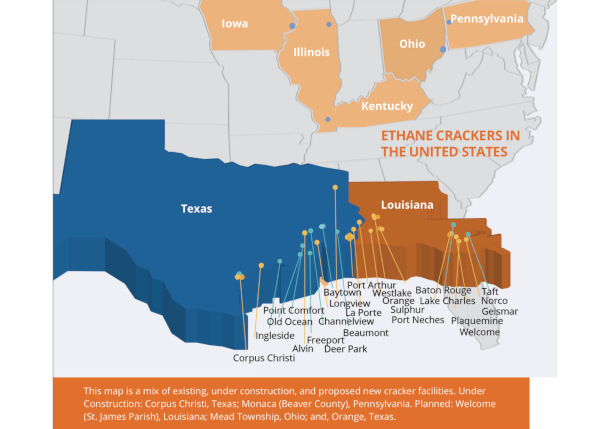
According to the report by Beyond Plastics, more than 90% of the climate pollution that the plastics industry reports to the EPA occurs in 18 communities, mostly along the coastline of Texas and Louisiana. The image above points to the area of ethane cracker facility concentrations, with blue dots showing existing facilities and red and orange showing proposed. (Photo: Screenshot of The New Coal: Plastics and Climate Change by Beyond Plastics report)
BASCOMB: Now, President Biden has set a goal of slashing greenhouse gas emissions by 50% in the next nine years by 2030. How do you think plastic production should fit into that agenda? And for that matter, what is the Biden administration doing in terms of addressing plastic pollution and greenhouse gas emissions from plastic?
ENCK: They're doing virtually nothing. So right now, I would say the issue is missing in action. And we're going to be working very hard in the months ahead, to get plastics on the climate change agenda, both at the state and federal level. So we view this report as a clarion call to policymakers and businesses. Yes, let's keep working, driving down greenhouse gas emissions wherever we can but don't leave plastics out of the equation, because then we're going to be regretting that all of our good hard work to phase out fossil fuels for energy and transportation may get canceled out with this uptick in plastic production.
CURWOOD: Judith Enck the founder of Beyond Plastics, speaking with Living on
Earth’s Bobby Bascomb. And Bobby joins me now for more. Hey there Bobby.
BASCOMB: Judith Enck is founder of Beyond Plastics. We reached out to the fossil fuel companies Judith mentioned here: Shell, Exxon, and SABIC but we didn’t get any responses.
The Plastics Industry Association though told Waste 360 that “it’s no surprise that an organization named Beyond Plastics would cherry pick data to fit their narrative.” And they go on to defend plastic saying it’s more lightweight than alternatives including glass and metal. So, they claim plastic uses less energy and has lower carbon emissions.
Related links:
- Reach the report by Beyond Plastics The New Coal: Plastics and Climate Change
- Read a report by The Plastics Industry Association
- Rolling Stone | “Report: Plastic May Soon Overtake Coal as a Climate Killer”
David Buchbinder, “Walk To the Sea” on Walk To the Sea, by David Buchbinder, Tzadik-A
Project of Hips Road
Captive Audience

Three yellow-billed storks hunt cooperatively in the Olare Orok River during a prolonged drought in the Maasai Mara. (Photo: © Mark Seth Lender)
Note: This segment starts at 12:04 in the above podcast file.
Captive Audience
Yellow-billed Stork
Olare Orok River, Maasai Mara© 2022
Mark Seth Lender
All Rights Reserved
CURWOOD: Cooperative hunting among birds is rare. Explorer in Residence Mark Seth Lender shares an unexpected instance, perhaps resulting from the prolonged drought in the Maasai Mara.
LENDER: The river is no longer a river but a rip, in the fabric. Where once rapids tore through, nothing flows. Puddles scattered in potholes, here; there. Water, disconnected from itself. Stagnant. The color of decay. Which is not a color but its absence.
The sun goes hurtling down.
The plains where the monsoon should have come and gone by now still wait.
Only night and day arrive on time, relentless.
Life concentrates like salt...
Well after sundown, in defiance of common sense, a family of yellow-billed storks are having a party. Four in number like beats to the measure stepping to a rhythm so obvious you can hear it with your eyes –
Ching
(Ka-ching)
Ching-Ching
(Ka-ching)
Ching! Ching! Ching!
Ching-Ching
(Ka-ching)
Their half-open bills stir water. Lead left with a shoulder as heads turn right, right with a shoulder as heads turn left, step over step, over step over step, over –
Right
(and Left)
Right-Right
(Left)
(Left)
And right –
Nearby Blue Heron stands. Absent a partner? These steps, those moves? He will never be their master. He flies away.
While yellow-billed storks,
Keep
On
Dancing…
Ching
(Ka-ching)
Ching-Ching
(Ka-ching)
From pool –
Ching! Ching!
Ching-Ching!
(Ka-ching)
To pool -
Ching! Ching!
Ching-Ching!
(Ka-ching)
- KA-PLUVE! -
Frog!
]
- KA-PLOOSH! -
Catfish!
Toss -
Swish -
Down the hatch!
Turn out the lights,
(and)
Lock the latch.
(And)
Ching!
(Ka-ching)
Ching-Ching!
(Ka-ching)
In the Season of Want
All want Relief.
Some gonna Hunger,
Others gonna Feast.
Ching!
(Ka-ching)
Ching-Ching!
(Ka-ching)
Ching! Ching! Ching!
Ching-Ching
CACHTING!
Related links:
- Visit Mark Seth Lender’s website
- Special thanks to Destination Wildlife
MUSIC: Seely Dan “Mr. Parker’s Band, ON PRETZEL LOGIC, MCA 1974
BASCOMB: Coming up – A recent study found Phthalate chemicals in many types of fast
food packaging, raising concerns for chemical exposure in consumers.
That’s just ahead on Living on Earth.
ANNOUNCER: Support for Living on Earth comes from Sailors for the Sea and Oceana. Helping boaters race clean, sail green, and protect the seas they love. More information @sailorsforthesea.org. Support also comes from Friends of Smeagull the Seagull and Smeagull’s Guide to Wildlife. It’s all about the wildlife right next door to you! That’s Smeagull, S - M - E - A - G - U - L - L, SmeagullGuide.org.
MUSIC: Punch Brothers - Passepied (Debussy) From the Album The Phosphorescent Blues,
Nonesuch
Fast Food with a Side of Phthalates
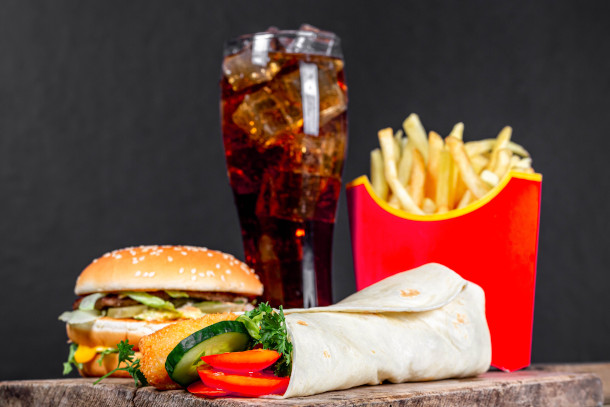
The study analyzed hamburgers, fries, chicken nuggets, chicken burritos, and cheese pizza and found detectable levels of plasticizers and concerning orthophthalates. (Photo: Marco Verch, Flickr, CC BY 2.0)
Note: This segment starts at 15:18 in the above podcast file.
BASCOMB: It’s Living on Earth, I’m Bobby Bascomb
CURWOOD: And I’m Steve Curwood. Cheeseburgers, chicken nuggets and burritos are among the menu items sold by popular fast-food restaurants and more often than not they contain chemicals linked to serious health problems and even early death. This news comes from a preliminary study conducted by public health researchers at George Washington University. They found that at least 70 percent of the fast-food items tested in samples from six fast food chains contained toxic chemicals called phthalates, which are used to soften plastics. Some of the plasticizers that made their way into the food samples appeared to come from plastic gloves used to handle the food. For this study published in the Journal of Exposure Science and Environmental Epidemiology, the GWU team looked at three types of fast food: burgers, pizza, and Tex Mex. They found phthalates everywhere they looked but found higher levels
in meat from burgers and chicken burritos. For more I’m joined now by Dr. Ami Zota, co-author of the report. Dr. Zota, welcome back to Living on Earth!
ZOTA: Thank you for having me.
CURWOOD: So, why study phthalates in fast foods?
ZOTA: That's a great question. So, phthalates are a class of plasticizers. So, they're a class of synthetic chemicals that are ubiquitous in our environment. They have a lot of demonstrated health effects that we're concerned about, including effects on the reproductive system like fertility, male reproductive development, like sperm concentrations, and sperm function, and even neurodevelopmental effects in children. And so, we want to reduce exposures because we're concerned about the public health impacts. And it ends up that diet, and our food is a really important pathway.
CURWOOD: So, what kinds of fast foods did you study? Which kinds had the most amounts of phthalates in them?
ZOTA: We picked burger restaurants, pizza restaurants, and Tex Mex. We used market share data to go after, you know, the ones that were the most people eat. And interestingly, you know, there weren't huge variations across chains, which to me suggests that this is an industry wide issue. We did find differences by food type. So, for example, generally, foods containing meats such as cheeseburgers and chicken burritos had higher levels of chemicals than those without meat like cheese pizza.
CURWOOD: Which fast food chains are we talking about here?
ZOTA: That's a question that everyone wants to know. So, those are available in the paper. And we tested McDonald's and Burger King, Pizza Hut and Domino's and Taco Bell and Chipotle.

In this study researchers sampled 64 fast food items from different restaurants as well as three pairs of unused handling gloves and looked for 11 kinds of phthalates. (Photo: DisconnecTomas, Flickr, CC BY-ND 2.0)
CURWOOD: Now, not all chemicals that can make plastic soft are the same, and some, but not all, have been shown to be harmful to human health, as you say. So, what exactly, which chemicals did you find here, exactly?
ZOTA: These phthalates are, you know, several years ago, they were the dominant plasticizers used across the world. As I mentioned, they've been extremely well studied in human and animal studies. CPSC under the direction of Congress, I think about 10 years ago, passed a law restricting the use of certain phthalates like DEHP and dibutyl phthalate from children's toys. So, and those certain ortho-phthalates are also restricted by the European Union. So, there has been pressure on the private sector to begin to look for alternatives, and so we refer to these as non-phthalate plasticizers. They're still industrial chemicals, but they haven't been as well studied. You know, they may be less potent than DEHP, yet they may still contribute to negative health outcomes. And so one of the novel parts of our study, we found this rather newer plasticizer, DEHT, in fairly high concentrations, and we found it in the food, and we found it in the food handling gloves that we tested. And there's virtually no data, no toxicology data, no epidemiologic data on DEHT, currently in the peer reviewed literature, and so you know, once again, we're doing a big experiment on ourselves, where we're allowing our population to be exposed to this chemical before we really understand, you know, whether it's safe.
CURWOOD: Of the fast food you studied, how many contained the phthalates that are known to be health hazards to humans, compared to the ones which have yet to be tested?
ZOTA: We looked for 11 chemicals, we found 10 of them. So, we found virtually all of the phthalates that we were looking for in these fast food meals. The two that were most commonly detected were dibutyl phthalate and di-2 ethylhexyl phthalate or DEHP which is a particularly notorious agent. So dibutyl phthalate was detected in 81% of foods, and DEHP was detected in 70% of foods.
CURWOOD: And those chemicals are chemicals of the Consumer Product Safety Commission says should not be in children's toys at this point?
ZOTA: That is absolutely correct. Right. So, they find it concerning for them to be in children's toys, yet they are currently allowed to be used as food additives in the US as regulated by, as decided by the US FDA,
CURWOOD: Bobby Bascomb in our shop notes that in a Happy Meal for a child, it would not be okay to have phthalates in the toy, but yet it's okay to be in the burger, your thoughts?
ZOTA: I couldn't have said it better. I really couldn't have. So, hopefully, our study will help to shine a light on that and drive change so that you know when we're eating our burger, we don't have to eat plasticizers.
CURWOOD: And for the record of the plasticizers that have yet to have thorough human health reviews, what percentage of food that you tested had those?
ZOTA: Right, so, we looked at three alternate or replacement plasticizers and the one that was most ubiquitous was this DEHT. So it's a terephthalate, not an ortho-pthalate. And that was detected in 86% of the of foods. And it was also the one that was detected in all of the food handling gloves that we sampled, which we also obtained from the same restaurants where we collected the food.
CURWOOD: Are these chemicals? Are they attracted to fat? You scientists would call them lipophilic.
ZOTA: They are. That's right. But they are lipophilic, and they do bioaccumulate but not necessarily in the same way in your body. So, they're non-persistent in the body, but that is correct. So, they are more likely to be found in meats, dairies and oils. That's correct.
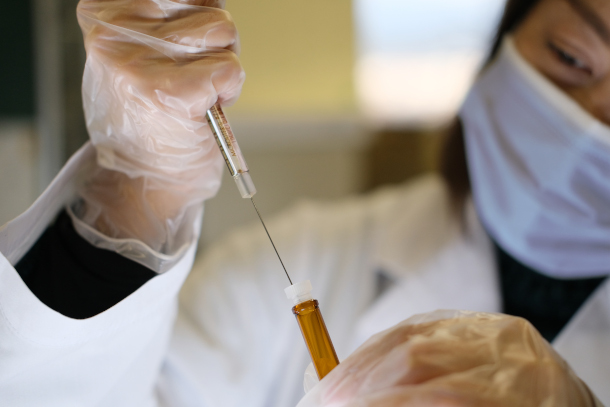
Plastics that make their way into food can come from gloves, industrial tubing, food conveyor belts and wrap packaging commonly used in fast food. (Photo: Japanese Expert, Flickr, CC BY 2.0)
CURWOOD: Tell me more exactly what you looked at, And I noticed you mentioned that food handling gloves were considered for the second phase of your study.
ZOTA: You know, we're interested in sources that wasn't the main objective of our study. But you know, ultimately, if we're trying to intervene, it's important to understand sources. And so several other studies had pointed out that these food handling gloves, which are often made of you know PVC plastic have high amounts of plasticizers, and when the gloves touch the food that plasticizer chemicals can actually migrate out of the gloves into the food, especially if that food is hot. And generally, we did find a pattern between the level of chemicals in the food in those restaurants and and what was in the gloves. But obviously, this is not a definitive analysis.
CURWOOD: What are the public health and regulatory implications of your work? Right now I don't see a label if I go to a fast food restaurant that says may contain phthalates.
ZOTA: Right, so currently, the whole class of ortho-phthalates that we are calling phthalates, as well as these replacement plasticizers, they're allowed to be used in as food additives, according to the FDA, so they're allowed to be in our gloves in our packaging, you know, in other types of plastics, like our tubing and conveyor belts, and there are no regulatory thresholds in terms of how much phthalates can be in your food. And so that would go under FDA authority, you know, allowing phthalates to be, you know, an allowable food additive. And so that's something that they're currently deciding on or considering at the moment.
CURWOOD: If I understand it correctly, it's pretty much impossible for an ordinary consumer to test food to see if it has phthalates contaminating it. So what should consumers do? What's the takeaway for consumers of fast food based on this preliminary study of yours?
ZOTA: That's right. A point you made is that while individual choice is important, we need policy solutions. I think one takeaway is that, you know, if you're eating out a lot, you are going to be increasing your exposure to these chemicals. And maybe you're fine with that, but you know, if you have vulnerable people in your family, you may want to reconsider. If you are going to eat, eat in moderation, and consider reducing your intake of meat because there, you know, there were higher amounts of these chemicals in meat.
CURWOOD: Dr. Amit Zota is a Professor of Environmental and Occupational Health at George Washington University. Thanks so much for your time today.
ZOTA: Thank you.
CURWOOD: We reached out to each of the fast-food chains cited in the study but did not get a response from any of them before our deadline. The Washington Post has quoted the FDA as saying, “Although the FDA has high safety standards, as new scientific information becomes available, we reevaluate our safety assessments.”
Related links:
- Read the study: Phthalate and Novel Plasticizer Concentrations in Food Items from U.S. Fast Food Chains: A Preliminary Analysis
- Eurekalert | “Deaths To ‘Hormone Disruptor’ Chemical Costs Millions In US Productivity”
MUSIC: Heather Masse, “Chosen” on Bird Song, by Heather Masse, Red House Records
CURWOOD: To get the stories behind the stories on Living on Earth, as well as special updates, please sign up for the Living on Earth newsletter. Every week, you’ll find out about upcoming events and get a look at show highlights and exclusive content. Just navigate to the Living on Earth website, loe.org, and click on the newsletter link at the top of the page. That’s loe.org.
MUSIC: Heather Masse, “Chosen” on Bird Song, by Heather Masse, Red House Records
Rising Seas Threaten Landfills
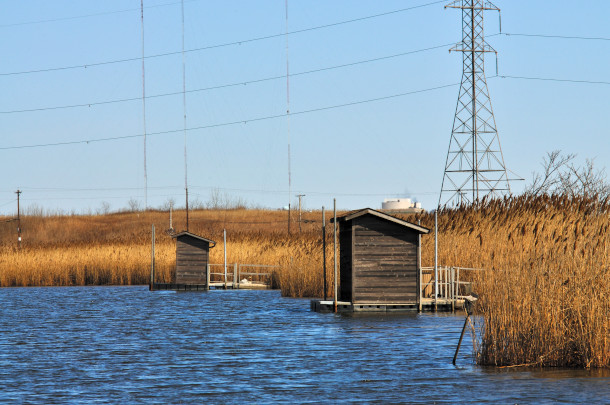
Sandwiched in between New York City and the urbanized communities of northern New Jersey, restored portions of the Hackensack Meadowland at DeKorte Park in Lyndhurst provide a welcome sanctuary for a wide array of wildlife. Part of the park sits atop an old landfill and a "garbage island" where trash was once dumped illegally. The Meadowlands provide a stop-over for migratory birds travelling the Atlantic Flyway. (Photo: Steven Reynolds, Flickr, CC BY 2.0)
Note: This segment starts at 25:59 in the above podcast file.
BASCOMB: There are roughly 100,000 landfills across the United States and more than half are on the coast where sea level rise is a serious threat. In fact, scientists tell us to expect several feet of sea level rise in the next century as a result of climate change. Independent journalist Dave Lindorff has been digging into this story for the Nation and he joins me now. Dave Lindorff welcome to Living on Earth.
LINDORFF: Thank you for having me.
BASCOMB: Well, why are there so many landfills sited in coastal areas? I mean, I guess that's where the people live mostly. So it's kind of makes sense, is that all there is to it?
LINDORFF: That's it. You know, historically, landfills have been everywhere people are, and the majority of people live along coastlines. In the US, it's about, I think, 40% of the population lives within something like 40 miles of a coastline. You know, dating back to the industrial era, they've had to put garbage in places and what they do is they pick what are considered wasted land for landfills. And wasted land is defined as land that you can't build taxable property on. And that tends to be swamps, wetlands, river estuaries, and floodplains. And that's exactly what coastlines are. I mean, it's kind of amazing. If you go to a place like the New Jersey wetlands, there are 13 mountainous landfills sitting in the wetlands. And some of them are, you know, as much as 300 feet high, filled with garbage, and closed. So they're covered with sod, they look, they look harmless, because you know, they look like grassy hills. But those waters are going to rise, they had a eight foot storm surge on top of the tide when Hurricane Sandy hit in 2012. When it gets worse, and the water's actually higher, and then you get these storm surges too, the sod is going to take, be taken off the liners that are on whatever of those landfills have liners. And many of them don't, under or over; none of them are lined underneath. And so all of this stuff is vulnerable, it could all wash out.
BASCOMB: And so the concern is literally that rising seas will just come and tear away the landfills and you'll have just garbage emptying out into estuaries, marshes and ultimately the ocean.
LINDORFF: That's right. And the thing about that is you know, remember that these these wetlands are where about 70% of the sea life in the open ocean have part of their reproductive cycle. You know, either whether it's laying eggs or mating up river or having their young, all of these creatures that ecology depends on have to have some kind of pollution-free wetlands or river estuaries for their breeding cycle.
BASCOMB: Well, that's the thing. I mean, when a lot of these landfills were built, I mean, as you said, you know, wetlands were just, you can't farm there, you can't build there, you might as well put your garbage there. But now of course, we know that they're tremendously important ecosystems, as well as protecting from storm surge and, and rising seas. That's kind of adding insult to injury, in a way.
LINDORFF: Yeah, they also are actually, I had in the article some research that showed that wetlands also are major absorbers of CO2. So if you kill off the plant life in them that does that job, you've also worsened global warming, and increased the speed of sea rise.
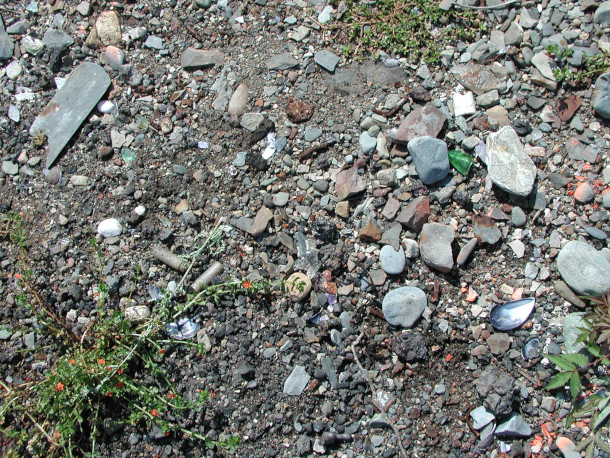
Photograph from the Gallops Island Incinerator Site in Boston Harbor, Massachusetts. (Photo: Massachusetts Department of Energy, Flickr, CC BY 2.0)
BASCOMB: And what about saltwater intrusion in these landfills? Does saltwater interact with the material in there in a different way than rainwater would?
LINDORFF: Absolutely, when they say that, you know, these poly plastic liners that they put, sometimes in a newer facility, they say the bottom has a poly plastic liner. And then also they put a poly plastic liner on top when they close a part of a operating dump. And then they cover it with maybe, you know, five or six feet of earth. Those plastic liners are much more vulnerable when they're in saltwater.
BASCOMB: And from what I understand, you know, with these landfills, we're not just talking about solid waste here, you know, plastic cups and diapers and things which are bad enough, but there are also a lot of chemicals and even some nuclear waste that could escape. Can you tell us more about that?
LINDORFF: Here's the other thing, is most of these dumps are pre-1980. I mean, the vast majority of them are pre-1980. We don't know what's in those because there were no regulations whatsoever before 1980 on what could go into a dump. So what you have is a situation where, at a time when the US used to have a lot more manufacturing on chemical industries and things like that they were dumping their waste, their transition chemicals and so on into the local landfill. It was the cheapest place to put it. Even the Manhattan -- they found Manhattan Project waste in one of the New Jersey landfills in the wetlands and had to try to dig it all up and they still haven't succeeded. So that dump, which is closed, called the Edgeboro Landfill, it's got nuclear waste in the bottom of it. This, all of these possibilities, heavy metals, you know, dioxins, everything that's used in manufacturing can be in these dumps, and they aren't lined.
BASCOMB: Because it seems like nobody's really talking about this right now or, or making a plan to address it and you write in your article that the EPA, which would seem like the obvious government agency to, you know, spearhead taking care of this problem. They don't actually have jurisdiction over these landfills. Could you tell us about that?
LINDORFF: Congress would have to give them jurisdiction, they actually recently waived any regulation at all of landfills that are receiving less than 20 tons of garbage per day. That's a lot of garbage! [LAUGHS]
BASCOMB: Indeed. So that leaves it to states and local municipalities to try to do something with these facilities?
LINDORFF: Right, exactly.
BASCOMB: Well, we are in this situation, and I think people are probably becoming more aware of the potential consequences of sea level rise, and hopefully including this issue of landfills. Where do we go from here? Are there any state or local governments or even international municipalities or governments that are looking at this issue that maybe can, you know, serve as a roadmap for, for the rest of us as we're going forward?
LINDORFF: Unfortunately not. I mean, the closest I can think of is the UK because when I initially started the story's research, I Googled "coastal landfills threatened by sea level rise," and the only thing I got was this study at the University of Southampton. And that was a government funded study, they came up with a list of recommendations. And you know, a survey of all the threatened areas and landfills, and that was a big step forward. I would say the first thing is that the EPA should do cataloging of all these landfills and find out in a governmental way, what the issue is and how big it is and how it could be solved. And then, you know, maybe people will start addressing it.
BASCOMB: Dave Lindorff is an independent journalist contributing to The Nation. Dave, thank you so much for taking this time with me today.
LINDORFF: Thank you for having me on.
Related links:
- Read Dave Lindorrf’s article in The Nation about coastal landfills and rising sea levels
- SCOPAC Coastal Landfills Study: Coastal Flooding, Erosion and Funding Assessment
- Read EPA’s study on ‘Vulnerability of Waste Infrastructure to Climate Induced Impacts in Coastal Communities'
MUSIC: John Scofield, “Just Don’t Want To Be Lonely” on Überjam Deux, Longsolo
CURWOOD: Coming up – A woman from Uganda is striving to bring a youthful African
voice to the international climate talks.
That’s just ahead on Living on Earth.
ANNOUNCER: : Funding for Living on Earth comes from you, our listeners, and United Technologies, combining passion for science with engineering to create solutions designed for sustainability in aerospace, building industries, and food refrigeration.
MUSIC: Sonny Rollins, “St.Thomas” on Saxophone Colossus, by Sonny Rollins (based on trad.
Bahamian "Sponger Money" [1] and trad. English "The Lincolnshire Poacher"), Fantasy
A New African Voice on Climate
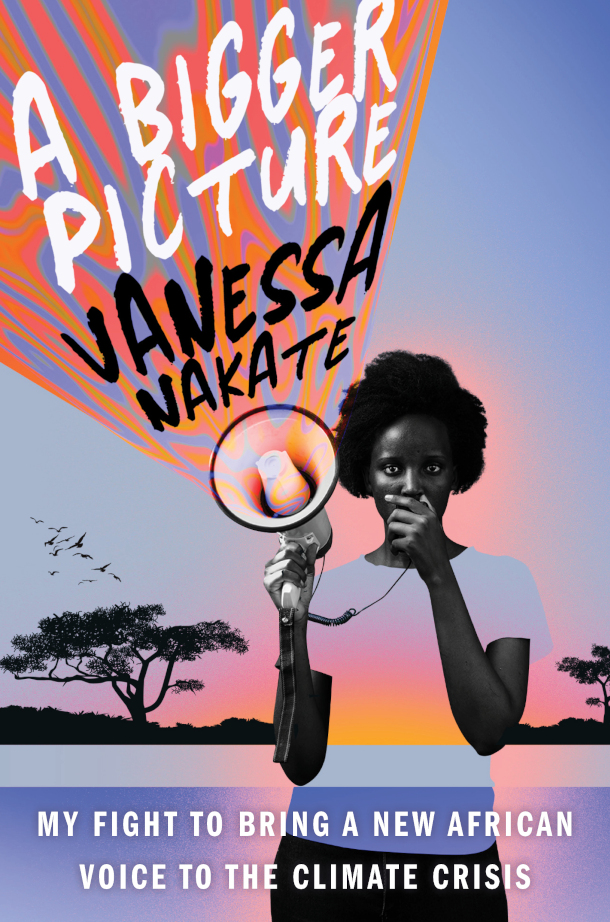
Vanessa Nakate’s book A Bigger Picture: My Fight to Bring a New African Voice to the Climate Crisis recounts her journey as an environmental justice activist and serves as a roadmap for empowerment to those who want to follow her lead and act on the global climate crisis. (Photo: Courtesy of Vanessa Nakate)
Note: This segment starts at 33:35 in the above podcast file.
BASCOMB: It’s Living on Earth. I’m Bobby Bascomb
CURWOOD: And I’m Steve Curwood.
Three years ago, at the age of 15 Greta Thunberg started the Fridays For the Future climate strikes by sitting in front of the Swedish Parliament, and millions of people around the world ultimately joined her cause. One of them was Vanessa Nakate of Kampala, Uganda who was just getting out of college at the time. In the face of climate change, intensified floods and droughts that ravaged Uganda at the time Vanessa was inspired by Greta to organize and start holding climate strike signs herself in front of the Ugandan Parliament. Greta Thunberg soon heard of Vanessa through social media and in January of 2020 Vanessa was invited to join Greta for a press conference at the World Economic Forum in Davos, Switzerland. But the Associated Press cropped Vanessa, the only black woman, out of a widely circulated photo that included Greta Thunberg and three other white European activists. Comments citing that editorial decision as racist soon went viral. And since that incident Vanessa has used her visibility to bring light to climate struggles in the Global South. In her book, A Bigger Picture: My Fight to Bring a New African Voice to the Climate Crisis, Vanessa points to how climate change is impacting Africa and the short shrift that she and other people and nations of color receive at
the UN climate talks. Vanessa Nakate welcome to Living on Earth!
NAKATE: Thank you so much, happy to be here.
CURWOOD: You know, in the US we've had fires in the west of floods throughout the Midwest storms and droughts, but what kind of climate change effects are going on in Uganda?
NAKATE: The climate crisis is a present reality in Uganda. With the rising global temperatures, weather patterns are changing and we are seeing more extreme weather events. Uganda as a country heavily depends on agriculture for survival for many communities, especially those in the rural areas. But with the rising global temperatures many people are threatened with floods, droughts and landslides, causing massive destruction, massive loss of lives, loss of homes, farms and businesses. In the eastern part of the country, in areas around mountain Elgon, areas of Bududa and Bundibugyo people have experienced torrential rainfall causing massive flooding and landslides in the western part of the country in areas of Kasese, because of the rising global temperatures, many people have been displaced and still are living in camps because of extreme flooding.
CURWOOD: Please tell me a story of a particular recent climate related incident that was well not great for people in Uganda.
NAKATE: There are actually a number of events that have happened, but I can talk about one that happened last year. During the pandemic in 2020. The water levels of Lake Victoria rose as a result of extreme rainfall. And many people were displaced from their homes at a time when they had to stay at home to keep themselves safe. And with the rise in the water levels. Not only were farms destroyed, but even toilets were submerged, causing contamination of water sources and threatening the livelihoods of very many people.
Vanessa Nakate stands at center-right and carries a sign saying, "We cannot eat coal... we cannot drink oil."
CURWOOD: Now, you join Friday's for the Future in your 20s Vanessa. And that movement was made up of well, mostly teenagers and younger folks, why did you choose to join? Why did you choose to join the kids?
NAKATE: Yes. When I joined Friday’s for Future, I had also seen the movement and also how the media was reporting about the movement, and being a movement of teenagers and led by teenagers. And also, this is a challenge for some of my friends, because most of them were just finished in college and in their 20s. So, we all had this feeling that this movement was a movement for teenagers. But to me, that wasn't the issue. The issue was talking about what was happening in my country. So, I didn't really pay attention to how the media would report about the movement, whether it's for teenagers or not for teenagers, I just wanted to demand for climate justice and to talk about the challenges that the people in my country were facing because of the climate crisis.
CURWOOD: Vanessa, tell me about some of the projects that you're working on now.
NAKATE: In 2019, I started school project Vash build schools project, and it involves the installation of solar panels and eco-friendly cookstoves in schools. And I started this project to help drive a transition to renewable energy in schools in Uganda, and also for the clean cooking stoves to reduce on the firewood that schools were using for preparation of foods. Almost all the schools in my country use firewood for food preparation. But with these eco-friendly stoves, the number that is used is greatly cut. So, I hope that with this project, many schools can easily transition to renewable energy at no cost and also receive the eco friendly cookstoves. So far we've done installations in 13 schools.
CURWOOD: You write in your book that when you came actually to the UN, a couple of things happened. Number one, somehow you were asked to leave or move from areas that you didn't see other people being asked to move from. And also, you met with the Ugandan delegation. But when you come home, it was as if that hadn't happened. Can you tell me those stories?
NAKATE: Yes, I remember, one of the people was a part of the Ugandan delegation, sent me an email and asked if I can meet him and talk about my activism. And I did. We met at the UN, I think headquarters, and then after he directed me at the, I think it's like the Uganda house in the United States, New York, and he invited me for breakfast there, and I got to meet a number of the members of parliament, and I remember one of them actually recognizing me and saying that I've seen you on TV, you're the girl who strikes every Friday. And at that moment, I'm like, wait, you've seen me. And you haven't even said anything about the activism that I'm doing, or what are the young people doing, you're just telling me now. And at that moment, there was a couple of business cards, you can reach out to us when you're back in the country. But I remember when I did that, they never responded to my calls. And I had given my number t some of them but they also never called. So I thought that it would be an opening of, you know, me and other youth activists to speak to the parliament, or to speak to members of parliament about the work that we were doing, and about our demands, but it never actually happened. And, yes, the scenario at the UN where I got to be lifted twice from seats, I didn't pay much attention to it when it happened. But later on, while I was writing the book, I reflected back on it, and I started to think about why it had actually happened, and why I had to stand for a while until I finally got a seat. So the experience at the UN Youth Climate Summit was not as expected.
CURWOOD: So let's talk about the media. We're talking because Associated Press was quite rude to you at the session in Davos, they cropped the picture that didn't include you. And since then, of course, media has been knocking on your door, I'm sure you have more press requests than you can possibly handle. How do you think the media is handling the climate emergency?
NAKATE: Yeah, after the photo crop incident, I started to get very many interviews that I can do. And many times I asked to give the interview to another activist who is also doing activism either in Uganda or in another country. And media sometimes is always, you know, specific, we want you we want you or if it's the other person they want, you know, to know if they're eloquent enough, or if they have done interviews before or if they've spoken at events before. So it puts really a challenge on how the media is reporting the stories of the vast number of activists. And I think also another challenge is that media is putting a face or faces on the climate movement. And I find it really dangerous, because in a way, it erases other people's stories. So media has a responsibility to report about the climate crisis, to point about the climate solutions, to report about the science, to report about the activists who are speaking up, especially activists from the most affected areas, it's important to listen to their stories, every activist has a story to tell every story has a solution to give and every solution has a life to change.
CURWOOD: You write in your book, that you were heartbroken after the incident in Davos, and after your first trip to the United Nations. Talk to me about that. And what would mend your heart? What would heal your heart?
NAKATE: Yes, after my trip to New York for the UN Youth Climate Summit, my disappointment really came from, you know, the feeling that when I got the invitation, and when I was told that I would have a speaking role. I worked on my speech. And I was just really happy to talk about the experiences of the people in my country. And then towards the, you know, the trip, I asked, so how long should my speech be? And that's when I'm told that well, you're actually not going to speak but you will just be able to, you know, be like in discussions with other young activists. And at that point, it was really a disappointment before I left and I couldn't tell my family or my friends because they were very excited and you know, looking forward to hearing me talk about what was happening. So I think that was one of the you know, disappointments I had and also not being able to coordinate and meet as many activists as possible. While there was also a challenge. And then my other disappointment, the one in Davos, of course, I was really heartbroken and frustrated when I saw the picture and also read the article because I remember the press conference, one of the things that I really emphasized was the amplifying of voices from different parts of the world, because the activists from different parts of the world, and it was important for the media to do that. I remember mentioning that while at the press conference, so when I saw, you know, the picture, and then the article, I felt like everything that I said at the press conference, like it didn't matter at all effort, like it just went into the air and immediately disappeared, and no one was really paying attention. So it was really heartbreaking to see the picture. And what would really heal my heart? Yeah, I can say that my heart has healed and I forgive all of them.
CURWOOD: I've wondered myself, I've been to a number of the UN Climate meetings and such. And one thing, I noticed that only white countries, with exception of Japan, were included in Annex One back in the Kyoto process. And that typically, leadership all seems to be from the global north, there. Yes, there are people of color who sit on committees, and even the General Assembly is chaired by sometimes by persons of color, but the power remains at the Security Council. How effective do you think the United Nations is in dealing with the danger and concerns from climate for the global south, in terms that are strong enough and meaningful enough?
NAKATE: Well, I think that the UN, but not just the UN and the leaders and governments, I think that they're all not doing enough when it comes to handling the issues of the climate crisis in the global south. Because if they were, then we wouldn't be seeing that escalation or the frequent climate disasters in our communities. We wouldn't be seeing these floods or hurricanes or cyclones, or droughts unfolding in our communities. And it's really a responsibility of all these leaders to ensure that the people from the most affected communities are prioritized, and that their stories are listened to, and the solutions are given and, and that climate finance is given for these communities, especially for loss and damage. So it feels like we are still speeding in the wrong direction. And while we do that many people and many communities continue to suffer as a result of climate disasters.
CURWOOD: But we're still in the climate emergency. So before you go, Vanessa,
NAKATE: Yeah.
CURWOOD: We are now, the world, is listening to you. The world is gonna want to read your book, A Bigger Picture. And you are one among many activists, but like Greta Thunberg, you are now very much noticed as an activist, and from the part of the world that hasn't had much of a voice of activism. What's the message that you want people to know?
NAKATE: My message is really a long message, but I will try to, to put it in, you know, very few words. I come from Uganda, and it's a country in Africa. And it's important for people to know that, historically, Africa is responsible for only 3% of global emissions. And yet Africans are already suffering some of the most brutal impacts of the climate crisis. It's also important to know that while Africa, while the global south is on the frontlines of the climate crisis, it is not on the front pages of the world's newspapers. And it's also important to know that there are a number of activists in the African continent in the global south who are speaking up who are demanding for justice from leaders, from governments, from corporations. So what I would want people to know is that the young people in Africa are speaking up, and they're rising up for the people and they're rising up for the planet. And we want climate justice. We want climate action from the leaders and our voices will not be silenced.
CURWOOD: Vanessa Nakate's book is called A Bigger Picture: My Fight to Bring a New African Voice to the Climate Crisis. Thanks for taking the time with us today.
NAKATE: You're welcome. Thank you so much.
Related links:
- Learn more about the Rise Up Movement Africa
- Follow Vanessa Nakate on Twitter
- Learn more about how climate change provokes food insecurity and displacement in Africa
- Vanessa Nakate’s solar installation project
- Washington Post “Climate Activis
MUSIC: Abdullah Ibraham, “Chisa” on Cape Town Flowers, ENJA Records
CURWOOD: Living on Earth is produced by the World Media Foundation. Our crew includes Naomi Arenberg, Paloma Beltran, Chloe Chen, Iris Chen, Josh Croom, Jenni Doering, Delaney Dryfoos, Mark Kausch, Mark Seth Lender, Don Lyman, Louis Mallison, Aynsley O’Neill, Sophia Pandelidis, Jake Rego, Hannah Richter, and Jolanda Omari.
BASCOMB: Tom Tiger engineered our show. Alison Lirish Dean composed our themes.
You can hear us anytime at L-O-E dot org, Apple Podcasts and Google Podcasts, and like us, please, on our Facebook page - Living on Earth. We tweet from @livingonearth. And find us on Instagram at livingonearthradio.
I’m Bobby Bascomb
CURWOOD: And I’m Steve Curwood. Thanks for listening!
ANNOUNCER: Funding for Living on Earth comes from you, our listeners, and from the University of Massachusetts, Boston, in association with its School for the Environment, developing the next generation of environmental leaders. And from the Grantham Foundation for the protection of the environment, supporting strategic communications and collaboration in solving the world’s most pressing environmental problems.
ANNOUNCER 2: PRX.
Living on Earth wants to hear from you!
Living on Earth
62 Calef Highway, Suite 212
Lee, NH 03861
Telephone: 617-287-4121
E-mail: comments@loe.org
Newsletter [Click here]
Donate to Living on Earth!
Living on Earth is an independent media program and relies entirely on contributions from listeners and institutions supporting public service. Please donate now to preserve an independent environmental voice.
NewsletterLiving on Earth offers a weekly delivery of the show's rundown to your mailbox. Sign up for our newsletter today!
 Sailors For The Sea: Be the change you want to sea.
Sailors For The Sea: Be the change you want to sea.
 The Grantham Foundation for the Protection of the Environment: Committed to protecting and improving the health of the global environment.
The Grantham Foundation for the Protection of the Environment: Committed to protecting and improving the health of the global environment.
 Contribute to Living on Earth and receive, as our gift to you, an archival print of one of Mark Seth Lender's extraordinary wildlife photographs. Follow the link to see Mark's current collection of photographs.
Contribute to Living on Earth and receive, as our gift to you, an archival print of one of Mark Seth Lender's extraordinary wildlife photographs. Follow the link to see Mark's current collection of photographs.
 Buy a signed copy of Mark Seth Lender's book Smeagull the Seagull & support Living on Earth
Buy a signed copy of Mark Seth Lender's book Smeagull the Seagull & support Living on Earth

